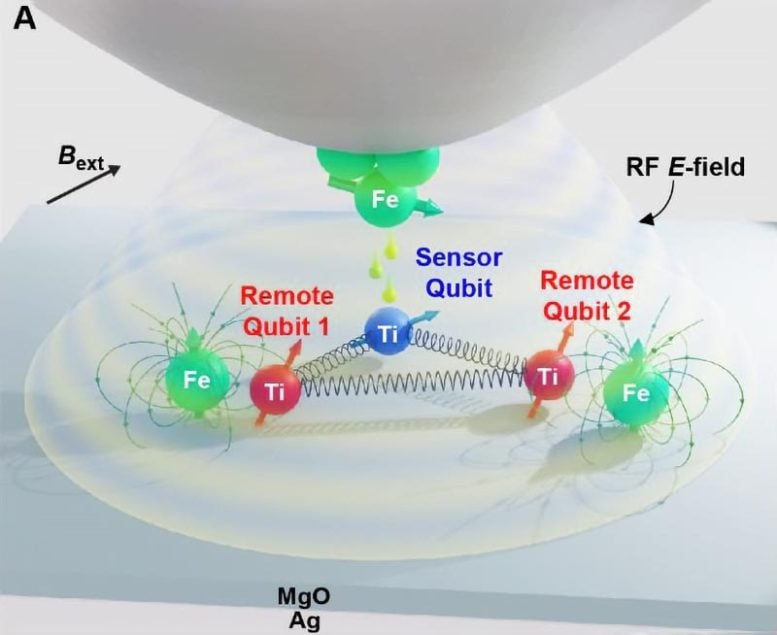
Researchers developed a groundbreaking electron-spin qubit platform assembled atom-by-atom. This enables the simultaneous control of multiple qubits, a significant step from the previous capability of managing only a single qubit. The platform offers atomic-scale precision and distinguishes itself from other qubit platforms in terms of flexibility and configuration.
Scientists at the IBS Center for Quantum Nanoscience (QNS) at Ewha Womans University have accomplished a groundbreaking step forward in quantum information science. In partnership with teams from Japan, Spain, and the US, they created a novel electron-spin qubit platform, assembled atom-by-atom on a surface. This breakthrough was published in the journal Science on October 6.
Multi-Qubit Control
Unlike previous atomic quantum devices on surfaces where only a single qubit could be controlled, the researchers at QNS successfully demonstrated the ability to control multiple qubits simultaneously, enabling the application of single-, two-, and three-qubit gates.
Qubits, the fundamental units of quantum information, are key to quantum applications such as quantum computing, sensing, and communication. Soo-hyon Phark, one of the QNS principal investigators, highlights the significance of this project. “To date, scientists have only been able to create and control a single qubit on a surface, making this a major step forward towards multi-qubit systems,” he stated.

The STM tip (Fe) operates the sensor qubit and romote qubits which creates the new multiple qubit platform. Credit: Institute for Basic Science
Innovative Qubit Platform
Led by Yujeong Bae, Soo-hyon Phark, and director Andreas Heinrich, QNS developed this novel platform, which consists of individual magnetic atoms placed on a pristine surface of a thin insulator. These atoms can be precisely positioned using the tip of a scanning tunneling microscope (STM) and manipulated with the assistance of electron spin resonance (ESR-STM). This atomic-scale control has allowed researchers to manipulate quantum states coherently. They also established the possibility of controlling remote qubits, opening the path to scaling up to tens or hundreds of qubits in a defect-free environment.
Yujeong Bae pointed out, “It is truly amazing that we can now control the quantum states of multiple individual atoms on surfaces at the same time.” The atomic-scale precision of this platform allows for the remote manipulation of the atoms to perform qubit operations individually, without moving the tip of the STM.
Comparison with Other Platforms
This research marks a significant departure from other qubit platforms, such as photonic devices, ion and atom traps, and superconducting devices. One of the unique benefits of this surface-based electron-spin approach is the myriad of available spin species and the vast variety of two-dimensional geometries that can be precisely assembled.
Future Prospects
Looking forward, the researchers anticipate quantum sensing, computation, and simulation protocols using these precisely assembled atomic architectures. Altogether, the work by the QNS researchers is expected to usher in a new era of atomic-scale control in quantum information science, cementing Korea’s position as a global leader in the field.
Reference: “An atomic-scale multi-qubit platform” by Yu Wang, Yi Chen, Hong T. Bui, Christoph Wolf, Masahiro Haze, Cristina Mier, Jinkyung Kim, Deung-Jang Choi, Christopher P. Lutz, Yujeong Bae, Soo-hyon Phark and Andreas J. Heinrich, 5 October 2023, Science.
DOI: 10.1126/science.ade5050









Be the first to comment on "Quantum Crafting: Atom-by-Atom Construction of a New Qubit Platform"